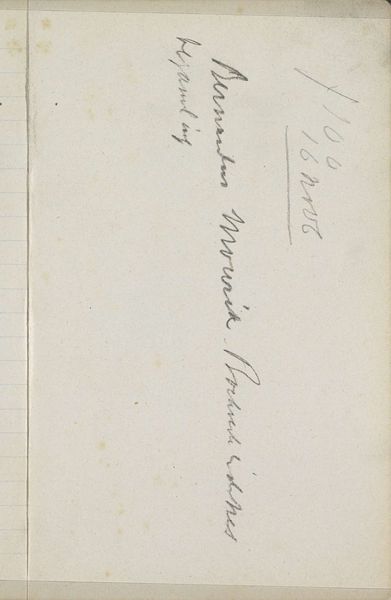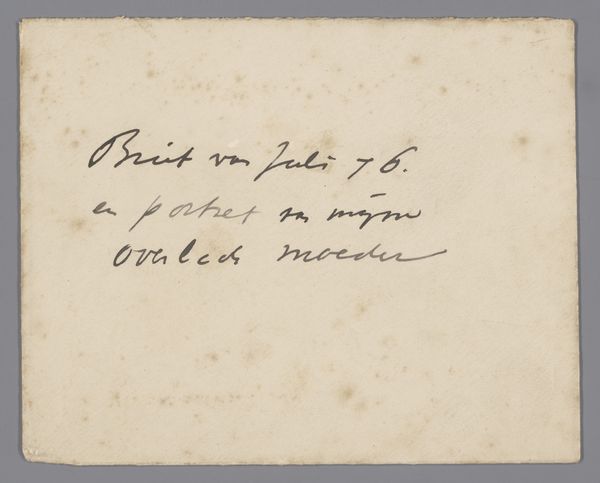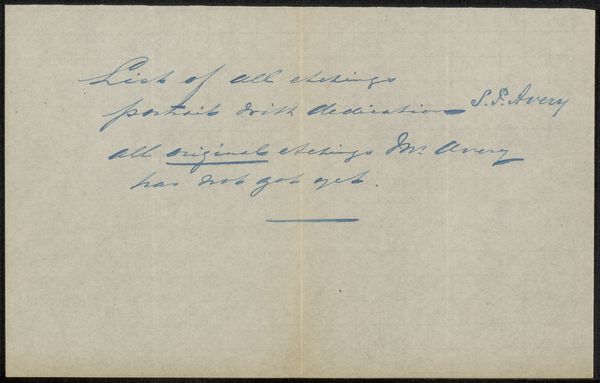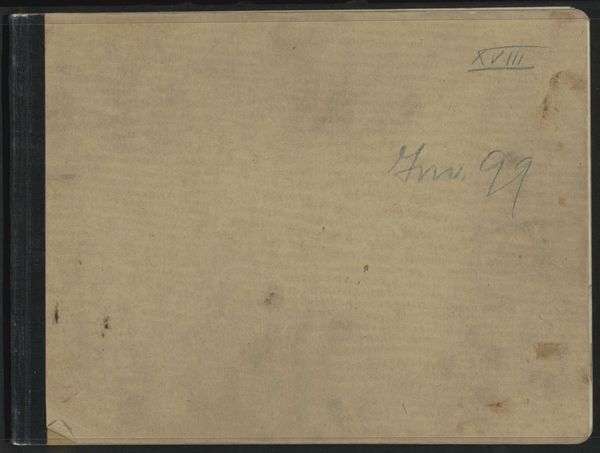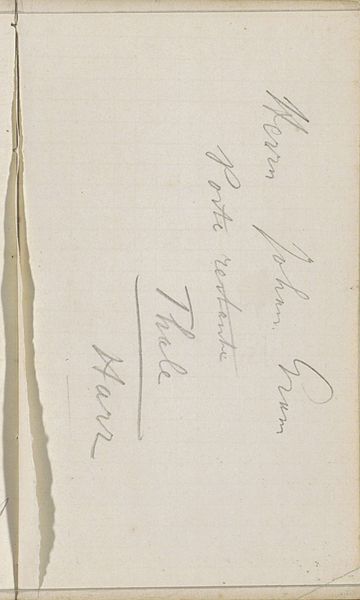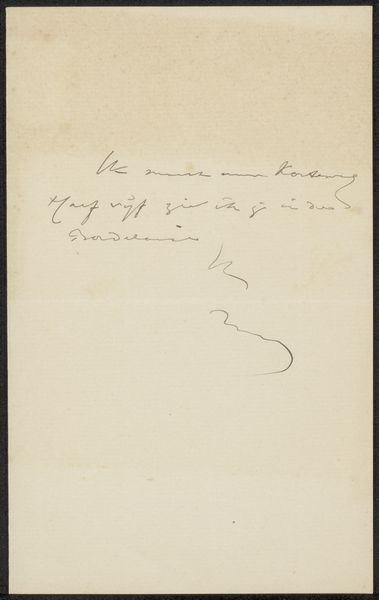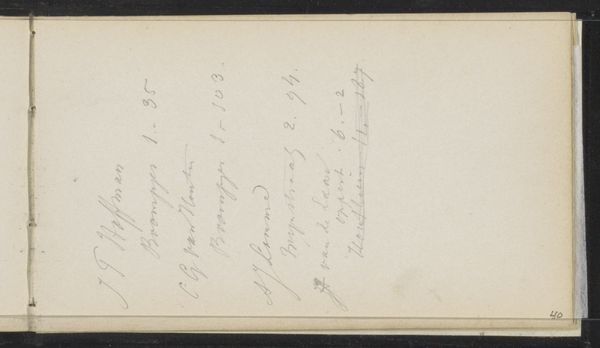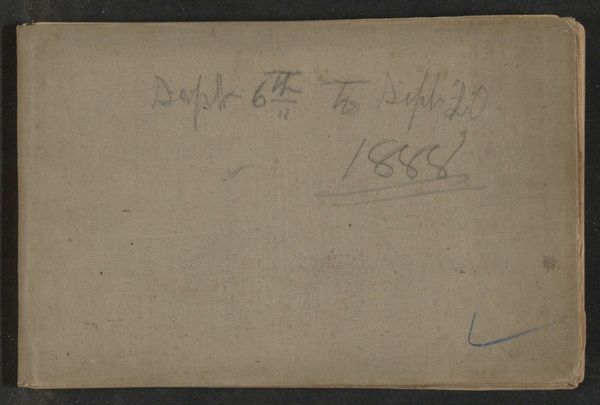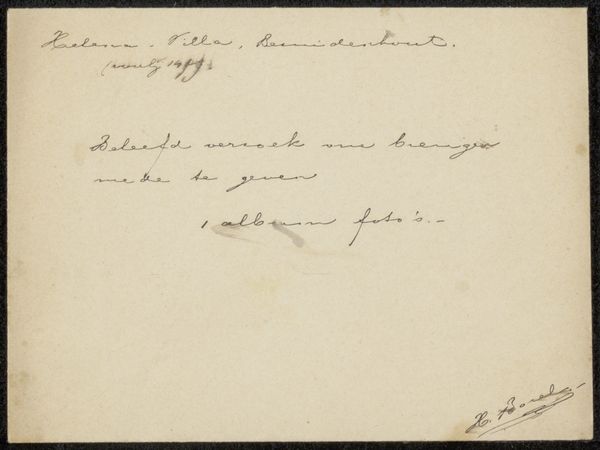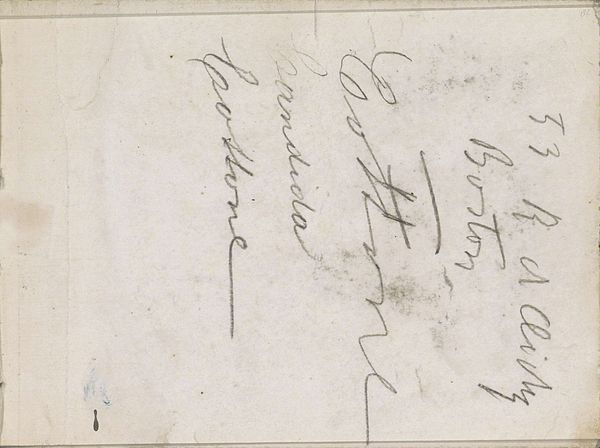
drawing, paper, ink
#
drawing
#
script typography
#
hand-lettering
#
hand drawn type
#
hand lettering
#
paper
#
personal sketchbook
#
ink
#
hand-drawn typeface
#
fading type
#
pen-ink sketch
#
sketchbook drawing
#
sketchbook art
#
calligraphy
Copyright: Rijks Museum: Open Domain
Curator: This small drawing in ink on paper, "Aantekening uit collectie August Allebé," or "Note from the Collection of August Allebé," is an anonymous work dating from 1921 to 1950. What strikes you about it initially? Editor: It feels almost spectral. The faint script on the aged paper, like a ghost of language, evokes absence and forgotten histories. There's a palpable melancholy. Curator: Yes, there’s an elegiac quality to its simplicity. I’m intrigued by its location within the Allebé collection, potentially offering a window into Allebé's influences or collecting practices and his politics as director of the Rijksakademie. Was this considered ephemera? Is the act of inscription, of simply noting something down, a political act of remembering? Editor: The script itself is evocative. The flourishes and careful loops speak to a particular era of handwriting, of personal documentation. What symbols or repeated motifs resonate for you? What continuity is evoked through this writing style? Curator: I keep thinking about the date range, 1921-1950, bracketed by significant social and political shifts including two world wars. How might those years of upheaval influence its creation? It challenges the assumption that art must be monumental to engage with trauma; it posits the possibility that quiet contemplation is also radical. Editor: And look how the ink fades, especially in the dates cited! Time is definitely the unseen subject here, both in its recording and its inevitable erosion. Even the simple horizontal stroke underneath seems like an underlining, a quiet but forceful way of accentuating memory. Curator: Perhaps it served as a personal reminder, reflecting Allebé's professional or personal connections. This piece prompts questions about marginality: about the notes artists keep, the things they value privately, and their relation to dominant narratives and who they seek to reach, influence, and possibly even help or serve with their notes and connections. Editor: It urges us to recognize value in what may be initially dismissed as mere ephemera and that every mark, every character style carries with it layered significations. Curator: Indeed, the overlooked often holds the greatest power, demanding we reconsider traditional modes of engaging with both history and art. Editor: I agree; its quiet presence speaks volumes and prompts an intriguing encounter with memory and signification.
Comments
No comments
Be the first to comment and join the conversation on the ultimate creative platform.
